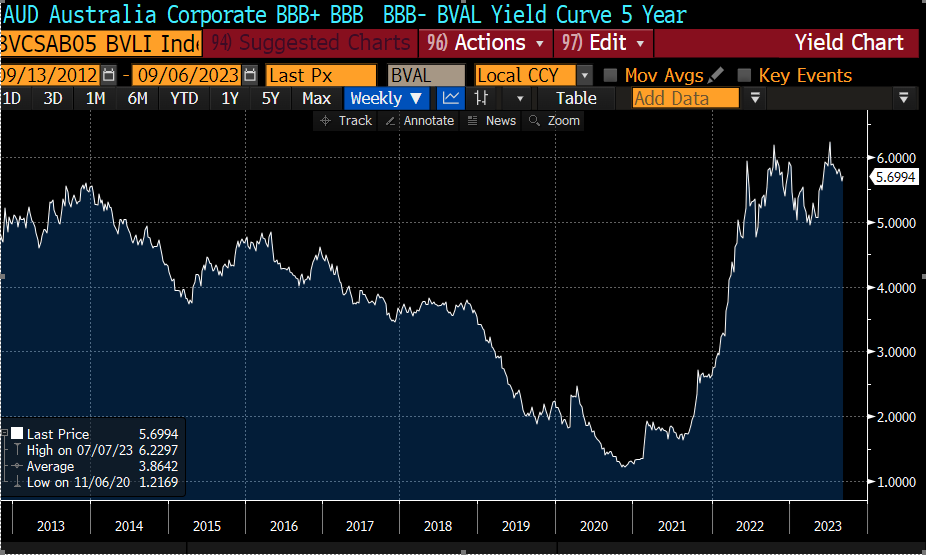Much has been written about the central banks and their policies during the COVID pandemic and some potential errors made (with the benefit of hindsight). Australian investors will now have to weigh whether a new era under Michelle Bullock’s leadership at the RBA will be meaningfully different, and what this will mean for the economy and the prices of various assets.
A famous bon mot asserts: “nothing fails like success”. Whether by luck or good judgment – or likely a combination of the two – the twenty-five years before COVID were a central banker’s dream: able to reduce interest rates. Investors became accustomed to steadily and cyclically lower lows and lower highs; and as risk-free returns declined (as measured by Government bond yields) those same investors were being incentivized, perhaps unwittingly, to take more risk to achieve more substantial returns. The result: asset price inflation in the riskier asset classes of bonds and property due to a well-behaved bond market, courtesy of no/low and even negative consumer price inflation.
The GFC was a rude interruption to the party, but with no rise in CPI, the flood of cash righted the ship and – after a significant interruption – the party continued.
COVID
With a flood of cash from all sorts of fiscal stimulus plus the RBA printing money, perhaps the central bank settings of the past would work their magic again?
Doubtless, the severe impact of COVID warranted an economic response, and in Australia’s case it was large, swift, and may have been overkill. Large cash payments to keep individuals and businesses afloat during the many lockdowns (particularly in Victoria) in concert with a flood of cash from RBA via bond buying, and a near-zero cash rate, two things happened;
- employment and activity recovered more quickly than many had anticipated, and inflation rose with free cash splashed everywhere.
- While some central banks, notably in NZ and the UK moved to reduce super-easy monetary conditions, Phil Lowe doubled down and pronounced rates would stay at zero for three years and borrowing increased, house prices spiked and those with savings and who desired less risk were forced to risk capital further in shares and property rather than invest in bonds or deposits at paltry rates of between 0.1% and 2%.
So, what (now)?
With the emergence of much higher consumer inflation and very strong employment growth, policy settings had to change. Twelve successive rate rises took the RBA rate from 0.1% to 4.1% in a shockingly short time. Those with savings rejoiced and those with large mortgages reached for their calculators.
The AUD and the local share market (and bonds)
Share prices in Hong Kong and China sit at levels 30% lower than mid-2021 and the AUD is around 12% lower than during that year. Meanwhile, locally, the share market is near all-time highs. Fixed rate longer dated bond prices have fallen by up to 25% in two-years, creating amazing opportunities for “yield to maturity” investors: investment grade corporate bonds that scarcely yielded 2% two years ago are now at 5.5-6.5%.
To restate, corporate bonds with investment grade ratings are now at decade highs, visually:

Central bank can change quickly, but investors….
When the penny dropped in mid-2022, the RBA moved rates with great haste. Like a soccer team that’s 3-0 down with fifteen minutes remaining, it was an all-offense strategy. While the rises were rapid-fire and loan rates adjusted quickly, the behaviours of investors often don’t change so fast.
Rental yields versus bond yields
While bond yields tripled, the rental returns on main city housing stock rose also – in a far more muted fashion from a little over 2% to around 3.2%, while yields on units were close to 5%. All in all, this seems insufficient when investors are carrying far more risk in these assets (as deleveraging continues) than in capital preserving bonds. It follows that investors must believe in price gains to make up the difference in returns or are so in love with the tax-breaks associated with negative gearing that they feel the risk is worth taking. Granted, nigh-on full employment and resumption of immigration is keeping rental yields buoyant, if the mean return on $1m of capital city property is 4% (minus expenses) and borrowings which are now at or near 7%, further adjustment seems likely in the prices of these properties.
Eg 1. Don’t fight the central bank(s) – another old saying
While investors have been seeing adjustments in bond prices due to the rises in official cash rates, this is likely to stabilize as we near the anticipated high of this rate cycle. Corporate bonds at 5.5-8% are giving investors returns well over the RBA target inflation rate and well over the market anticipation for inflation over the next five years, which are both under 3%..
Eg 2. Don’t fight the central bank(s) – the “Bernanke Put”
A few Fed Governors ago, Ben Bernanke’s name was associated with the phrase “The Bernanke Put”. What this meant was that it was ok to take risk with your capital and buy all sorts of high return options including shares, mortgages, derivatives because the central bank would come to your rescue in times of trouble in one (or both) of two ways: by cutting interest rates hard or by buying troubled assets in the event of a meltdown. But, these options are severely reduced while consumer inflation remains a problem.
Takeaways
- Corporate bonds and private debt are attractively priced for investors – those worried about further tightening int eh interest rate environment (hikes) should consider floating rate bonds; and
- Shares and property have not yet significantly adjusted given moves in rates, and the local share market may be susceptible with China now deflating.



